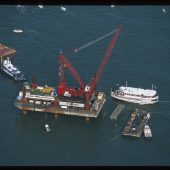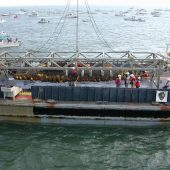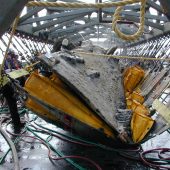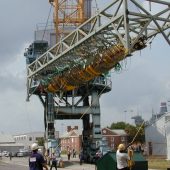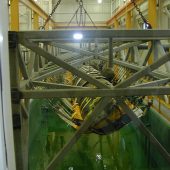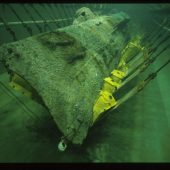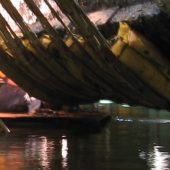August 8th, 2020 marks a major milestone for the Hunley submarine and scientific discovery. On that day in 2000, the world’s first successful combat submarine was gently lifted from her ocean grave and delivered to the Warren Lasch Conservation Center for study, excavation, and preservation. In the past twenty years, scientists working to save the legendary submarine have made fascinating discoveries and are advancing conservation science with their cutting-edge work.
The Hunley has always been shrouded in mystery. In 1864, she made world history then disappeared without a trace. For over a century, treasure hunters and history buffs searched in vain for the submarine. In 1995, an expedition led by Clive Cussler’s National Underwater Maritime Agency (NUMA) finally located the lost submarine and her eight-man crew.
Bringing the Hunley back to land was a major engineering feat. Then, after recovery, the Hunley’s scientific team faced the challenges of excavation and conservation, which pushed the boundaries of the Project well past simply saving the Hunley for future generations. Friends of the Hunley and Clemson University have compiled a long list of accomplishments and technological advancements.
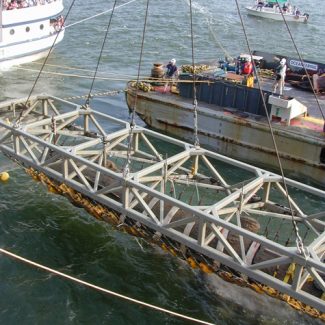
Click Images for Slideshow
A FEW OF THE HIGHLIGHTS INCLUDE:
Solving the Mystery of the Hunley’s Disappearance: Important forensic evidence and clues have been collected that will ultimately help answer questions about why and how the Hunley vanished. Using this evidence, we will be able to one day tell the Hunley’s full story, and this important chapter in naval history will be complete.
Excavation: The groundbreaking excavation of the Hunley’s crew compartment unearthed rare 19th century artifacts, including a gold coin that saved the life of the submarine’s Captain at the Battle of Shiloh in 1862. The coin is curved from the indention of a bullet and inscribed with his initials along with the words “My life Preserver.” Other artifacts were uncovered that taught us about life toward the end of the Civil War. The eight-man crew’s remains were also uncovered and later buried.
Center of Excellence: The Warren Lasch Conservation Center – built to house and preserve the Hunley – has become an internationally recognized center of excellence. Clemson University partnered with Friends of the Hunley to offer their expertise to the groundbreaking effort early on and now runs the state-of-the art lab saving other treasures from our past. In addition to Hunley artifacts, the Clemson team has worked on a wide array of projects locally, nationally and beyond, including delicately preserving pieces of artillery from the National Park Service, the USS Maine, Revolutionary War weapons, and bronze sculptures for the Girl Scouts of America among others. They have also worked on international projects in Peru, Denmark and Colombia.
New Technologies: In collaboration with Clemson University, new technologies have been developed that will substantially reduce the time and cost needed to save other maritime treasures.
Tourism and Awareness for South Carolina: With limited weekend-only tour hours, nearly 1 million visitors from all 50 states and over 20 countries have visited the former Charleston Naval Base to view the Hunley and learn about the development of submarines throughout the centuries. This number of visitors surpasses many established, full-time museums in the United States.
The Hunley has also been the subject of movies, documentaries and feature coverage on National Geographic, The History Channel, Discovery Network, The Today Show and dozens of other media outlets. For a state where tourism represents a major portion of the economy, the international exposure has produced tremendous value for South Carolina.


